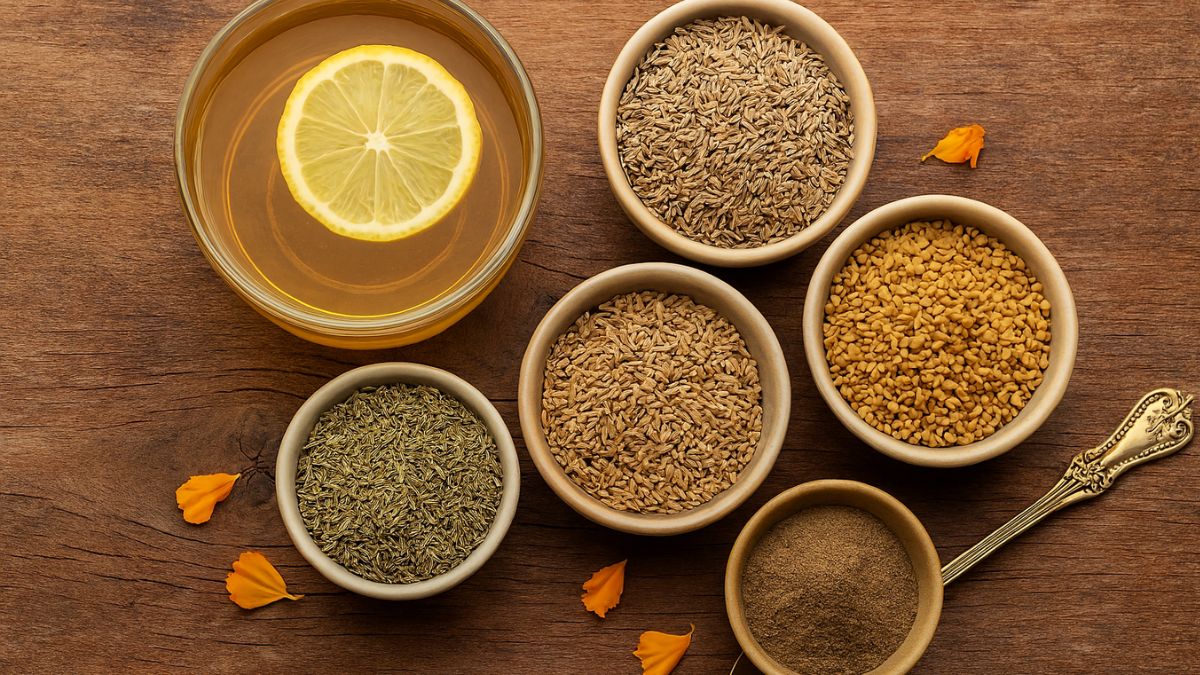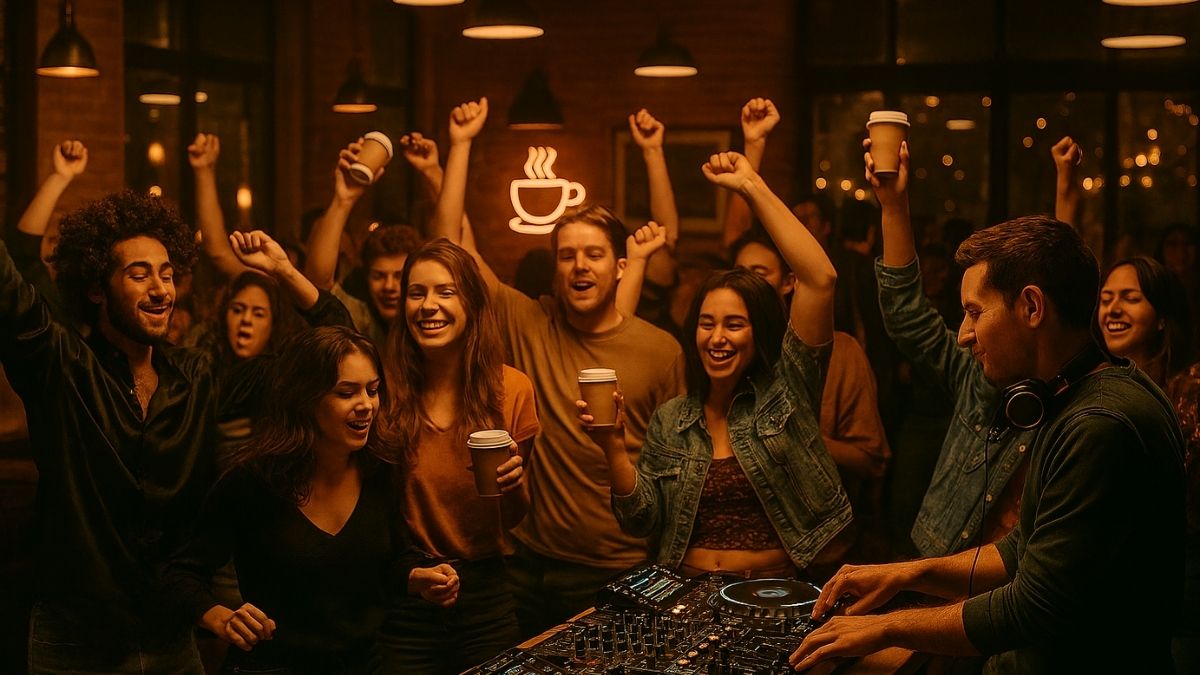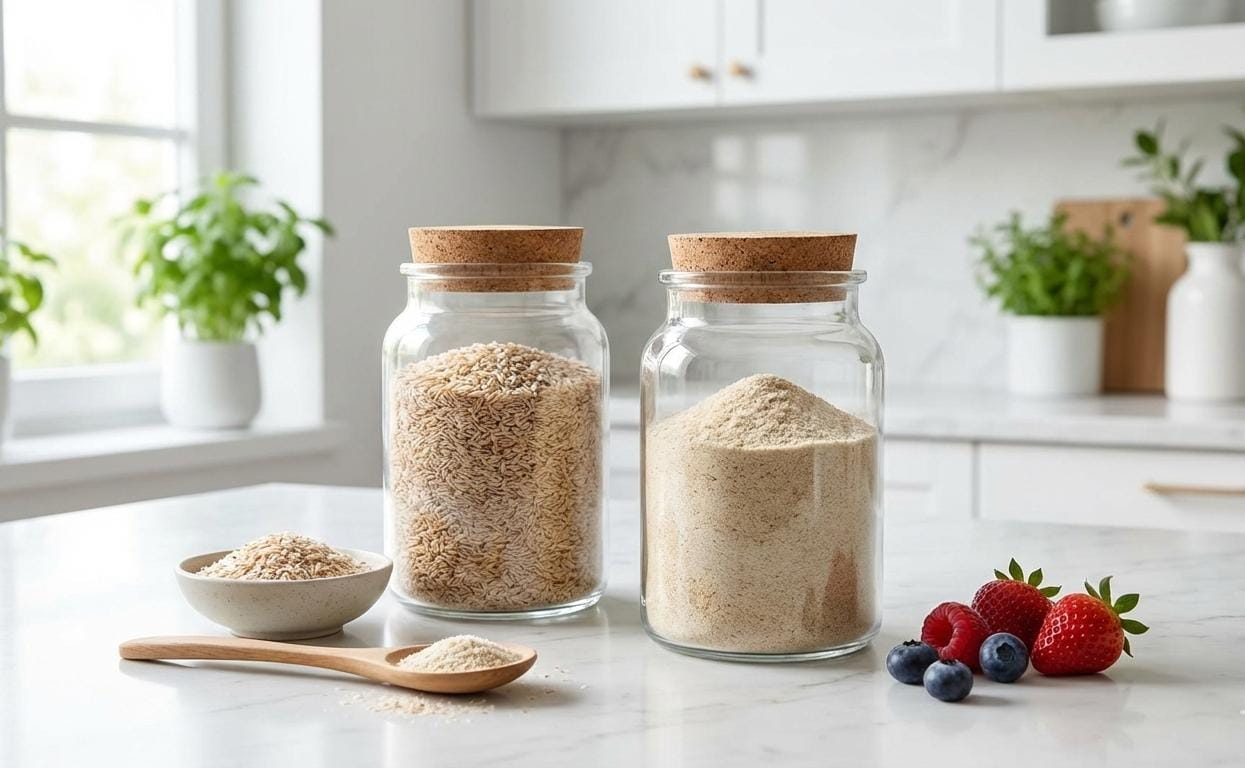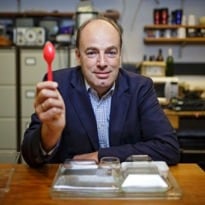An Oxford professor's research into what affects flavour, from who we eat with to background noise, has influenced food-industry giants and top chefs alike. Now his new book brings food science to the home cook, too
Charles Spence will eat just about anything. "We've got bee larvae ice-cream at home," says the Oxford professor of experimental psychology in his office, which looks out across the park towards the river Cherwell. They may look like maggots, but they taste good: "a little nutty, a little floral". Besides, he adds, "this is the future".
How to make bug-eating acceptable to westerners is one of the many gustatory challenges that he and his team are tackling. Through his studies into how the senses interact to form our perception of flavour, Spence is quietly influencing what we eat and drink, from the output of food-industry giants (he sits on the scientific advisory board of PepsiCo and much of his lab's work is funded by Unilever), to the menus of leading restaurants (he has collaborated with Heston Blumenthal for 12 years).
Spence and his peers have, through a line of scientific inquiry that is informally referred to as gastrophysics, studied in minute detail how we experience food and drink. Who we eat with; how food is arranged and described; the colour, texture and weight of plates and cutlery; background noise - all these things affect taste. Now he and his colleague Betina Piqueras-Fiszman have collated this knowledge into a book, The Perfect Meal, packed with insights that are fascinating to anyone in possession of an appetite. For example, the person in a group who orders first in a restaurant enjoys their food more. And we consume about 35% more food when eating with one other person, rising to 75% more when dining with three others.
Spence's lab is surprisingly un-space-age. "Low-tech, paper and Blu-Tack stuff," he readily admits. There are claustrophobic soundproof booths that resemble human-sized safes ("most of my PhD was done in one of those," he says fondly), along with stacks of ancient-looking audiovisual equipment. By keeping overheads low, he can afford to work more creatively with cooks who can't fund academic research themselves. Historically, he says, the industry funding he receives has been seen as "what you do if you can't do proper science". But since the government has insisted that universities demonstrate their work has an impact, that people are interested in it, it is now seen as a strategically good thing to do. Companies paying for his research know the results may not go their way. "We've done projects that haven't worked again and again. We're not funded by those companies any more, as it happens," he laughs.
Spence is currently helping famous brands through (often government-imposed) reductions in salt and sugar. It is in their interests, he points out, to help loyal customers stay alive for longer. Perhaps surprisingly, many have been making these reductions in secret. They do it gradually, so regular consumers don't notice the difference from one pack to the next. "The research shows that when you tell people what you're doing, it makes them focus on the taste and for whatever reason they don't like it as much," he says.
Since the early 20th century, big food has been using the results of sensory consumer testing to determine the effects of, say, colours and shapes on packaging. The American marketing guru Louis Cheskin coined the term "sensation transference" in the 1930s after discovering, for example, that if you added 15% more yellow to a 7 Up can, people thought they could taste more citrus. Now it is chefs and even keen home cooks who are benefitting from this sort of information.

Spence was introduced to Blumenthal by a food-industry giant, the flavour and fragrance house Firmenich. "At the time, people thought: 'Science and food - that's horrible,' although most food is scientific, in fact. Who better to change the mindset than Heston, who takes a very scientific approach to food? I got the sense he was brought in to help change people's perspectives." It was through Blumenthal's collaborations with Spence, who had been studying the effects of sound on flavour, that the Fat Duck's Sound of the Sea dish came about. "The Italian futurists were doing sounds of croaking frogs with frogs legs a century earlier," says Spence, but it didn't catch on.
Now, largely thanks to Blumenthal, the food industry is applying Spence's sensory science to products left, right and centre. This includes his recent findings that higher-pitched music enhances sweetness, and lower-pitched and brassy sounds taste bitter. Last year, Häagen-Dazs released an iPhone app that played a concerto while your ice-cream softens ("From what I've read, they haven't matched their music to the taste," says Spence disappointedly, which is what Ben & Jerry's is rumoured to be doing.) And in a few months, he says, one of the airlines will match music with food. "It's always surprising when shapes have tastes, and tastes have tones, and tones have instruments, and instruments have smells," he says. Indeed.
There are frustrations in working with the big food industry where frequently, according to Spence, "You present your research results to the company, then the marketing department says: 'Great ... Cancel the product, let's just go with the advert.'" He grabs an empty "Senses" Kit Kat packet from the shelf to illustrate his point. "It's just a regular Kit Kat," he says.
On the other hand, the chefs he works with, such as Jozef Youssef (the author of Molecular Gastronomy at Home) share his sense of adventure. These days, he says, "There are so many more chefs who say: 'I see what Heston or Ferran [Adrià] are doing and I want that to be part of my education. But in culinary school nobody taught me about the brain or about the neuroscience of gastronomy.'"
What, one wonders, are dinner parties like chez Spence? "We've had some fun ones," he says. There was the time they ate rabbit, with the pelt wrapped around the cutlery. And the one at which they played with remote-controlled, multicoloured lightbulbs. "We've had dinner parties with a tone generator, headphones and 10 kinds of beer lined up on the ironing board to see whether different beers have a different pitches." This was, he says, "partly for fun, and partly to get students from the lab thinking". Home, sweet shops, wine conventions or international gastronomy conferences: they're all extensions of the lab to Spence.
• The Perfect Meal is published on 3 October. Order a copy for £24.95 including free p&p from guardianbookshop.co.uk.
Top photo: Charles Spence in his lab: the colour of your cutlery can affect the taste of your food. Photograph: Sam Frost/Guardian










